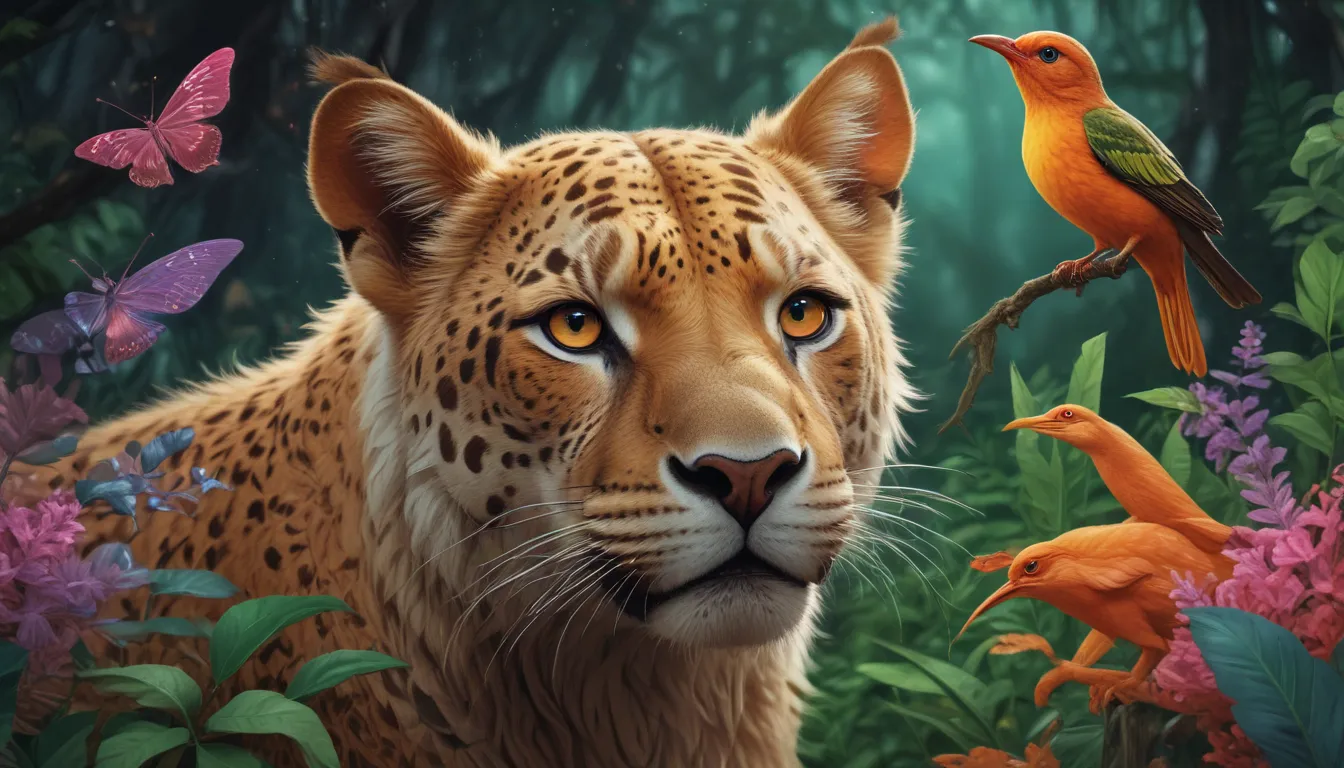A Note About Images: The images used in our articles are for illustration purposes only and may not exactly match the content. They are meant to engage readers, but the text should be relied upon for accurate information.
Animals are truly amazing creatures with sensory abilities that far surpass our own human senses. From dolphins using echolocation to bats navigating in darkness, the animal kingdom is filled with fascinating adaptations that allow them to thrive in their environments. In this article, we will delve into 16 surprising facts about animal senses that will leave you in awe of the natural world. Join us on this journey as we explore the extraordinary sensory capabilities of various species, from insects to marine mammals.
Unlocking the Wonders of Animal Senses
Key Takeaways:
– Dolphins utilize echolocation to locate prey
– Bats navigate and catch insects in darkness through echolocation
– Birds can see ultraviolet light
– Elephants communicate infrasonically
– Cats have highly sensitive whiskers
– Snakes can “see” infrared radiation
– Bees detect ultraviolet patterns on flowers
– Octopuses can taste with their suckers
– Sharks detect tiny electrical fields
– Birds sense Earth’s magnetic fields
– Dogs have a highly developed sense of smell
– Jumping spiders possess excellent vision
– Parrots can mimic sounds and human speech
– Electric fish use electric fields for navigation
– Honeybees communicate through dance
– Migratory birds detect Earth’s magnetic fields for migration
Dolphins: Masters of Echolocation
Dolphins have an extraordinary ability to emit high-pitched clicks and listen for the echoes that bounce back, enabling them to create a detailed map of their surroundings. This sensory adaptation helps them navigate and locate prey, even in murky waters where visibility is limited.
Bats: Navigating the Night Sky with Echolocation
Bats possess the remarkable ability to navigate and catch insects in complete darkness by emitting ultrasonic sounds and listening to the echoes that bounce back. This incredible sense of hearing enables them to survive and thrive in their nocturnal habitat, showcasing their exceptional sensory capabilities.
Birds: Seeing the World in Ultraviolet Light
While humans can only perceive a small portion of the electromagnetic spectrum, certain bird species have the ability to see ultraviolet light. This unique sensory adaptation allows them to detect intricate patterns on flowers, feathers, and other birds, demonstrating the diversity of animal senses.
Elephants: Communicating through Infrasound
Elephants communicate using low-frequency infrasound that is below the range of human hearing. They produce deep rumbling sounds to convey messages to other elephants over long distances, potentially signaling danger or coordinating group movements, showcasing their remarkable communication abilities.
Cats: Navigating with Sensitive Whiskers
Cats’ whiskers, known as vibrissae, are highly sensitive and serve as a crucial sensory tool for navigation. They help cats maneuver through narrow spaces, detect objects in the dark, and accurately gauge the width of gaps, highlighting the importance of whiskers in feline sensory perception.
Snakes: Detecting Infrared Radiation
Certain snake species possess specialized pit organs that can detect infrared radiation emitted by warm-blooded prey. This unique sensory adaptation allows them to accurately strike and capture targets, even in complete darkness, showcasing the remarkable abilities of these reptiles.
Bees: Navigating with Ultraviolet Vision
Bees have the ability to see ultraviolet light, revealing intricate patterns on flowers that are invisible to the human eye. This sensory adaptation helps them efficiently locate nectar and pollen-rich sources, contributing to the vital process of pollination in the natural world.
Octopuses: Tasting with Suckers
Octopuses have taste receptors on their suckers, allowing them to assess the composition of objects they touch. This unique ability enables them to determine the edibility of items before bringing them to their mouths, showcasing the surprising sensory capabilities of these intelligent marine creatures.
Sharks: Detecting Electrical Fields
Sharks possess a sense known as electroreception, enabling them to detect the electrical fields generated by other animals. This sensory adaptation helps them locate potential prey, even if hidden or camouflaged, showcasing their remarkable ability to sense their surroundings in the ocean.
Birds: Navigating with Magnetic Fields
Species like migratory birds have specialized cells in their eyes called magnetoreceptors, enabling them to navigate using the Earth’s magnetic fields. This extraordinary sense helps them find their way during long-distance migrations, showcasing the remarkable sensory abilities of these avian navigators.
Dogs: Masters of Olfaction
Dogs have a highly developed sense of smell, thanks to their specialized olfactory system. They can detect certain diseases, locate missing persons, and identify specific scents like drugs or explosives with remarkable accuracy. This exceptional olfactory ability has made dogs invaluable in various fields, from search and rescue to medical detection.
Jumping Spiders: Guardians of Precision
Jumping spiders are known for their exceptional vision, with large, forward-facing eyes that provide depth perception and accurate judgment of distances. This keen eyesight allows them to make precise leaps and pounce on prey with remarkable accuracy, showcasing their prowess as skilled hunters in the insect world.
Parrots: Masters of Mimicry
Species like parrots have the ability to mimic sounds in their environment, including human speech. Their complex vocalizations and mimicry skills have made them popular pets and subjects for scientific study, showcasing their remarkable ability to communicate through sound in the animal kingdom.
Electric Fish: Navigating with Electricity
Certain fish, such as electric eels and catfish, can generate weak electrical fields to navigate and locate prey in murky waters. By sensing disturbances created by other animals and objects, they can accurately detect their surroundings, showcasing the unique sensory adaptations of these aquatic creatures.
Honeybees: Communicating through Dance
Honeybees have a unique way of communicating the location of food sources to other bees in the colony through intricate dance movements. This complex form of communication conveys information about the direction and distance of food, aiding in efficient foraging and highlighting the remarkable social behaviors of these industrious insects.
Migratory Birds: Navigating with Precision
Birds like pigeons and seabirds can sense the Earth’s magnetic fields and use them as a navigational aid during migration. This remarkable ability enables them to undertake long journeys and find their way back to their breeding grounds with precision, showcasing the incredible navigational skills of these avian migrants.
Conclusion
In conclusion, the animal kingdom is filled with fascinating creatures that possess extraordinary senses, from echolocation in dolphins to ultraviolet vision in birds. By understanding and appreciating the remarkable sensory adaptations of animals, we gain a deeper appreciation for the complexity and diversity of life on Earth. Each of these 16 surprising facts about animal senses provides a glimpse into the wondrous world of animal perception and the incredible ways in which they interact with their environments.
FAQs
Q: Which animal has the best sense of smell?
A: The bloodhound is often considered to have the best sense of smell among animals, making them valuable in search and rescue operations due to their incredible olfactory abilities.
Q: Can animals see colors?
A: Yes, many animals can see colors, though the range of colors they perceive may vary from humans. Dogs, for example, see fewer colors, while some birds can perceive ultraviolet light, invisible to humans.
Q: How do animals navigate without sight?
A: Some animals use echolocation, magnetic fields, or celestial cues to navigate and locate objects in their environment. Bats and birds are examples of animals that rely on these sensory adaptations for navigation.
Q: Can animals taste flavors like humans?
A: Animals have taste buds, but their ability to perceive flavors may differ. Some animals, like cats, lack taste receptors for sweetness, while others, like butterflies, taste with their feet.
Q: How do animals communicate using sound?
A: Animals produce sounds through vocalization, drumming, or using specialized body parts for various purposes such as attracting mates, warning of danger, or establishing territory, showcasing the diverse ways animals communicate in the natural world.
Embark on a Journey of Discovery
Exploring animal senses is just the beginning of understanding the remarkable abilities of these incredible creatures. Whether you’re intrigued by the echolocation of bats or the mimicry skills of parrots, each aspect of animal senses offers a captivating glimpse into the unique ways animals interact with their environments. Join us on this journey of discovery as we unveil the mysteries of animal perception and the wonders of the natural world.






